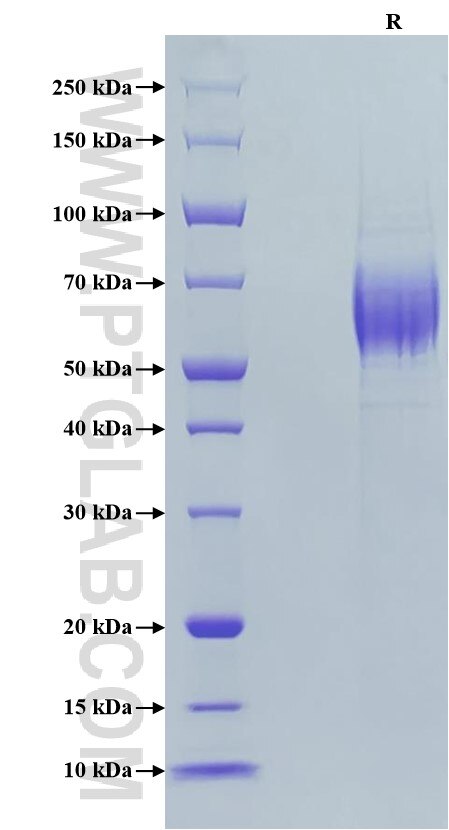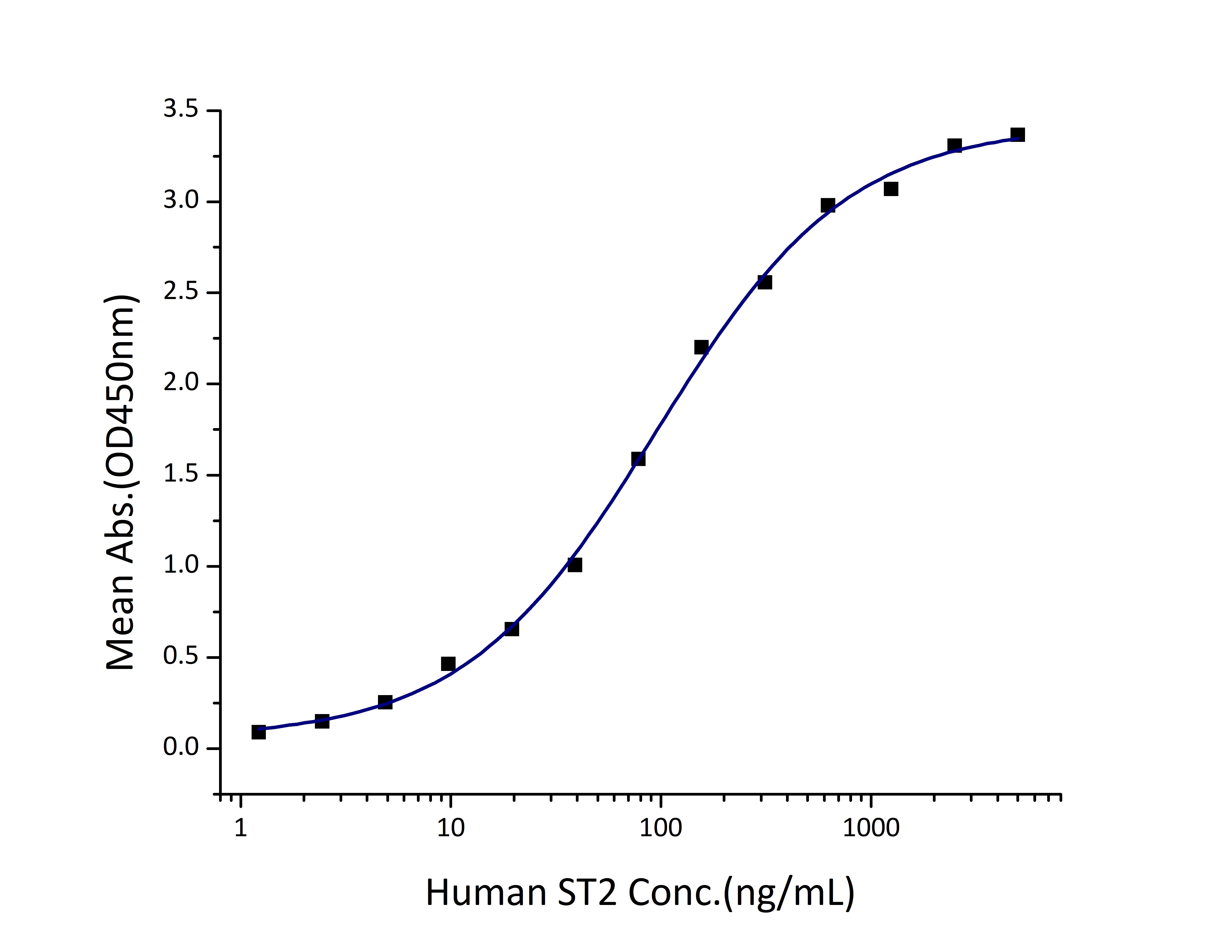Recombinant Human ST2/IL-1 RL1 protein (Myc Tag, His Tag)
Species
Human
Purity
>90 %, SDS-PAGE
Tag
Myc Tag, His Tag
Activity
EC50: 47-188 ng/mL
Cat no : Eg0116
Validation Data Gallery
Product Information
| Purity | >90 %, SDS-PAGE |
| Endotoxin | <0.1 EU/μg protein, LAL method |
| Activity |
Immobilized Human IL-33 (His tag) at 0.5 μg/mL (100 μL/well) can bind Human ST2 (Myc tag, His tag) with a linear range of 47-188 ng/mL. |
| Expression | HEK293-derived Human ST2 protein Lys19-Phe328 (Accession# Q01638-2) with a Myc tag and a His tag at the C-terminus. |
| GeneID | 9173 |
| Accession | Q01638-2 |
| PredictedSize | 40.6 kDa |
| SDS-PAGE | 55-75 kDa, reducing (R) conditions |
| Formulation | Lyophilized from 0.22 μm filtered solution in PBS, pH 7.4. Normally 5% trehalose and 5% mannitol are added as protectants before lyophilization. |
| Reconstitution | Briefly centrifuge the tube before opening. Reconstitute at 0.1-0.5 mg/mL in sterile water. |
| Storage Conditions |
It is recommended that the protein be aliquoted for optimal storage. Avoid repeated freeze-thaw cycles.
|
| Shipping | The product is shipped at ambient temperature. Upon receipt, store it immediately at the recommended temperature. |
Background
Protein ST2, also known as IL1RL1, is a member of the interleukin 1 receptor family. The gene of ST2 encodes three splice variants: a soluble secreted form (sST2), a transmembrane receptor form (ST2L), and a variant form of ST2 (ST2V). Interleukin-33 (IL-33) has been identified as a functional ligand of ST2L. IL-33 exerts its cellular functions by binding a receptor complex composed of ST2L and IL-1R accessory protein (IL-1RAcP). The interaction of IL-33 and ST2L activates mitogen-activated protein kinases and several biochemical pathways. The end of these reactions is the activation of the inhibitor of nuclear factor-kB (NF-kB) kinase complex, triggering NF-kB activity. sST2 seems to act as a decoy-receptor for IL-33: it binds IL-33 thus subtracting such a molecule from the interaction with ST2L. sST2 is formed by many cells and sST2 level is increased as response to myocardial stress, as well as in inflammatory conditions, including allergic asthma.
References:
1. Kuroiwa K, et al. (2000) Hybridoma.19(2):151-9. 2. Pecaric-Petkovic T, et al. (2009) Blood. 113(7):1526-34. 3. Ciccone MM, et al. (2013) Molecules. 18(12):15314-28. 4. Pascual-Figal DA, et al. (2015) Am J Cardiol. 115(7 Suppl):3B-7B.


